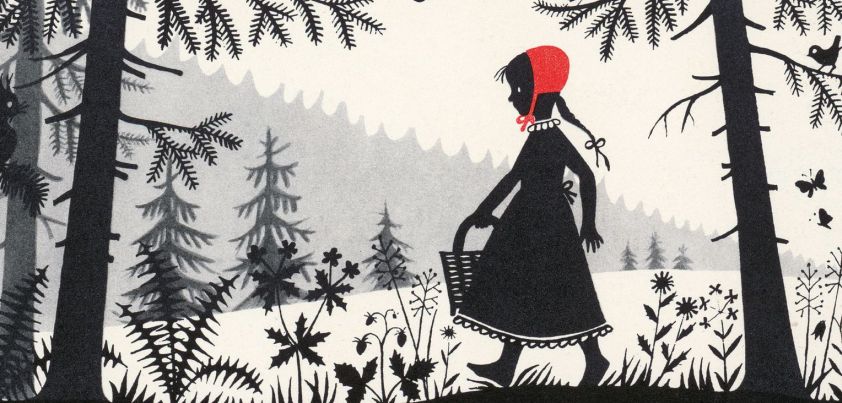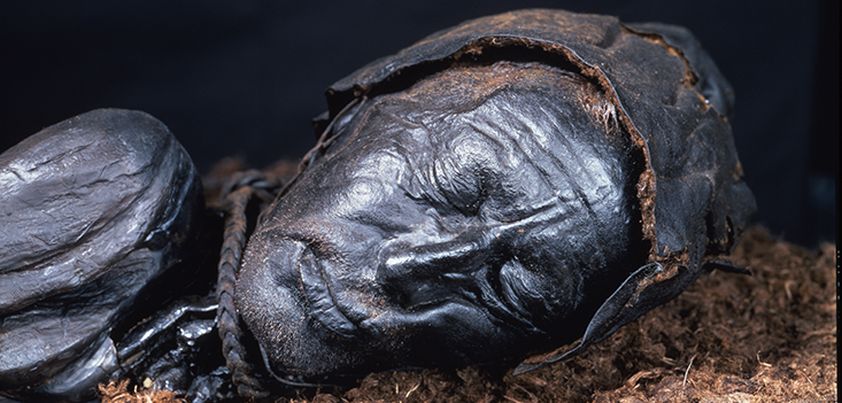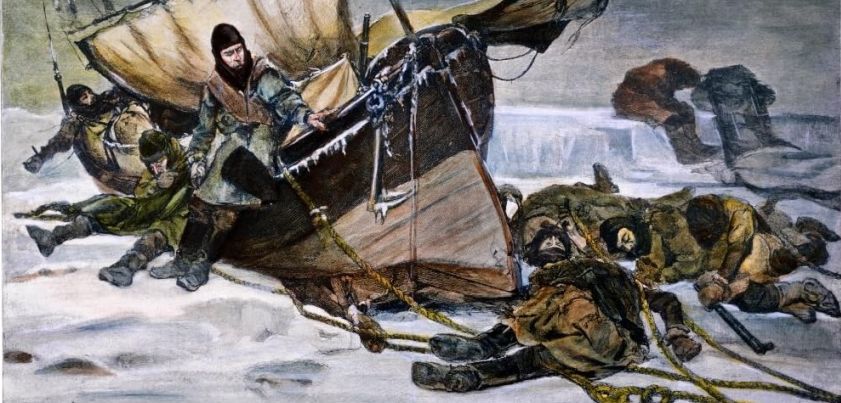 This humorous vignette from Margaret Atwood uses satire to not only highlight the frequent use of stereotypes in children’s stories, but also draw attention to the modern-day obsession with political correctness. A storyteller is humiliated into whittling his twenty-four-word opening sentence down to just one, and then changing it. This illustrates how, taken to extremes, almost anything one says has the potential to offend someone. Atwood’s message is that literature, the performing arts, news reporting and free speech as we know them would be impossible under such constraints. Themes: storytelling, stereotyping, political correctness, freedom of expression. More…
This humorous vignette from Margaret Atwood uses satire to not only highlight the frequent use of stereotypes in children’s stories, but also draw attention to the modern-day obsession with political correctness. A storyteller is humiliated into whittling his twenty-four-word opening sentence down to just one, and then changing it. This illustrates how, taken to extremes, almost anything one says has the potential to offend someone. Atwood’s message is that literature, the performing arts, news reporting and free speech as we know them would be impossible under such constraints. Themes: storytelling, stereotyping, political correctness, freedom of expression. More…
Archives
Bread
 This story by Margaret Atwood begins with four passages in which bread is used as a metaphor to illustrate a range of themes. In the first, it’s the good life (plenty and relaxation). In the second, famine (choices and consequences). In the third, life and death (betrayal or sacrifice). And in the fourth, social inequality and greed. The story concludes with a passage about a floating loaf of bread we know is real but are afraid to touch. The inference here is that most unaffected people prefer to turn a blind eye to the starvation and suffering in the world. More…
This story by Margaret Atwood begins with four passages in which bread is used as a metaphor to illustrate a range of themes. In the first, it’s the good life (plenty and relaxation). In the second, famine (choices and consequences). In the third, life and death (betrayal or sacrifice). And in the fourth, social inequality and greed. The story concludes with a passage about a floating loaf of bread we know is real but are afraid to touch. The inference here is that most unaffected people prefer to turn a blind eye to the starvation and suffering in the world. More…
Rape Fantasies
 This Margaret Atwood story makes extensive use of irony and dark humor to soften discussion of a serious topic. Set in a bar, the protagonist (Estelle) relates a lunchtime discussion she had with co-workers about rape fantasies. Two of them dream of erotic, romantic encounters, while another remains awkwardly silent. Estelle’s imagined attackers all have a physical or mental impediment requiring her help! Themes include gender stereotypes, vulnerability, complacency, and naivety (as exemplified by Estelle’s belief that having a conversation about rape with a man she meets in a bar will protect her against the real thing!) More…
This Margaret Atwood story makes extensive use of irony and dark humor to soften discussion of a serious topic. Set in a bar, the protagonist (Estelle) relates a lunchtime discussion she had with co-workers about rape fantasies. Two of them dream of erotic, romantic encounters, while another remains awkwardly silent. Estelle’s imagined attackers all have a physical or mental impediment requiring her help! Themes include gender stereotypes, vulnerability, complacency, and naivety (as exemplified by Estelle’s belief that having a conversation about rape with a man she meets in a bar will protect her against the real thing!) More…
Stone Mattress
 From the opening line of this Margaret Atwood story (At the outset Verna had not intended to kill anyone), we know someone will die. An woman who has become wealthy by helping four elderly husbands depart not only happy but grateful, if a little sooner than might have been expected, treats herself to an arctic cruise. Everything changes at the pre-cruise meet-and-greet, when she recognizes a man who had brutally raped her fifty years earlier. He doesn’t recognize her, and she begins to plot the perfect murder. Themes include rape, self-righteousness, resilience, seduction and manipulation, anger, violence, revenge, aging. More…
From the opening line of this Margaret Atwood story (At the outset Verna had not intended to kill anyone), we know someone will die. An woman who has become wealthy by helping four elderly husbands depart not only happy but grateful, if a little sooner than might have been expected, treats herself to an arctic cruise. Everything changes at the pre-cruise meet-and-greet, when she recognizes a man who had brutally raped her fifty years earlier. He doesn’t recognize her, and she begins to plot the perfect murder. Themes include rape, self-righteousness, resilience, seduction and manipulation, anger, violence, revenge, aging. More…
Happy-Endings
 The six “mini-stories” in this short meta-fictional narrative from Margaret Atwood satirize a common element of the story form. In the process, they touch on a myriad of themes including marriage and romance, family life, self-gratification, desperation, suicide, murder, virtue and compassion. The message seems to be that the ultimate denouement of a story matters little; the key is in its exposition and “How and Why” of events in between. The story also provides a lesson in life: What people will remember most about us after our book is closed is the how and why of the way we lived. More…
The six “mini-stories” in this short meta-fictional narrative from Margaret Atwood satirize a common element of the story form. In the process, they touch on a myriad of themes including marriage and romance, family life, self-gratification, desperation, suicide, murder, virtue and compassion. The message seems to be that the ultimate denouement of a story matters little; the key is in its exposition and “How and Why” of events in between. The story also provides a lesson in life: What people will remember most about us after our book is closed is the how and why of the way we lived. More…
The Bog Man
 As in an earlier Margaret Atwood story, The Age of Lead, The Bog Man revolves around a long-dead body. A university student’s hero worship of her archaeology professor leads to a torrid affair during which she accompanies him as his ‘assistant’ to inspect a 2,000-year-old body preserved in a Scottish peat bog. As his invisible wife comes between them, she feels “cheap and furtive”. Recognizing his shallowness, she ends the relationship. Like the bog man, over the years he becomes flatter and more leathery, as life goes out of him in her mind. Themes include infatuation, sexual exploitation, desire, guilt, empowerment. More…
As in an earlier Margaret Atwood story, The Age of Lead, The Bog Man revolves around a long-dead body. A university student’s hero worship of her archaeology professor leads to a torrid affair during which she accompanies him as his ‘assistant’ to inspect a 2,000-year-old body preserved in a Scottish peat bog. As his invisible wife comes between them, she feels “cheap and furtive”. Recognizing his shallowness, she ends the relationship. Like the bog man, over the years he becomes flatter and more leathery, as life goes out of him in her mind. Themes include infatuation, sexual exploitation, desire, guilt, empowerment. More…
The Age of Lead
 In this story by Margaret Atwood, a frozen 150-year-old body buried in the permafrost provides a lesson for the living. The story uses the solution to mystery cause of death of members of the ill-fated Franklin Expedition to highlight the dangers of consumerism and modern technology such as soil and water pollution, toxic waste and acid rain. The issues are brought home in the parallel story involving the the protagonist’s frustrating relationship with her eccentric, possibly gay lifetime friend who dies of an unknown viral infection. Themes include tragedy, side effects of consumerism and technology, individuality, friendship/unfulfilled love. More…
In this story by Margaret Atwood, a frozen 150-year-old body buried in the permafrost provides a lesson for the living. The story uses the solution to mystery cause of death of members of the ill-fated Franklin Expedition to highlight the dangers of consumerism and modern technology such as soil and water pollution, toxic waste and acid rain. The issues are brought home in the parallel story involving the the protagonist’s frustrating relationship with her eccentric, possibly gay lifetime friend who dies of an unknown viral infection. Themes include tragedy, side effects of consumerism and technology, individuality, friendship/unfulfilled love. More…
The Man from Mars
 In this story by Margaret Atwood a “big-boned”, athletic Canadian university student becomes anxious but gains self-esteem when a creepy-looking “Oriental” student begins to stalk her. The stalking, which largely takes place in plain sight, becomes a game of cat-and-mouse. Other men who have previously shown little interest in her take notice. Wondering what he sees in her, they begin to ask her out. She is not his only victim. When he is deported to his war-torn country, she becomes obsessed with trying to discover his fate. Themes include otherness (alienation and loneliness), beauty standards and self-image, stereotyping, obsession, fear. More…
In this story by Margaret Atwood a “big-boned”, athletic Canadian university student becomes anxious but gains self-esteem when a creepy-looking “Oriental” student begins to stalk her. The stalking, which largely takes place in plain sight, becomes a game of cat-and-mouse. Other men who have previously shown little interest in her take notice. Wondering what he sees in her, they begin to ask her out. She is not his only victim. When he is deported to his war-torn country, she becomes obsessed with trying to discover his fate. Themes include otherness (alienation and loneliness), beauty standards and self-image, stereotyping, obsession, fear. More…